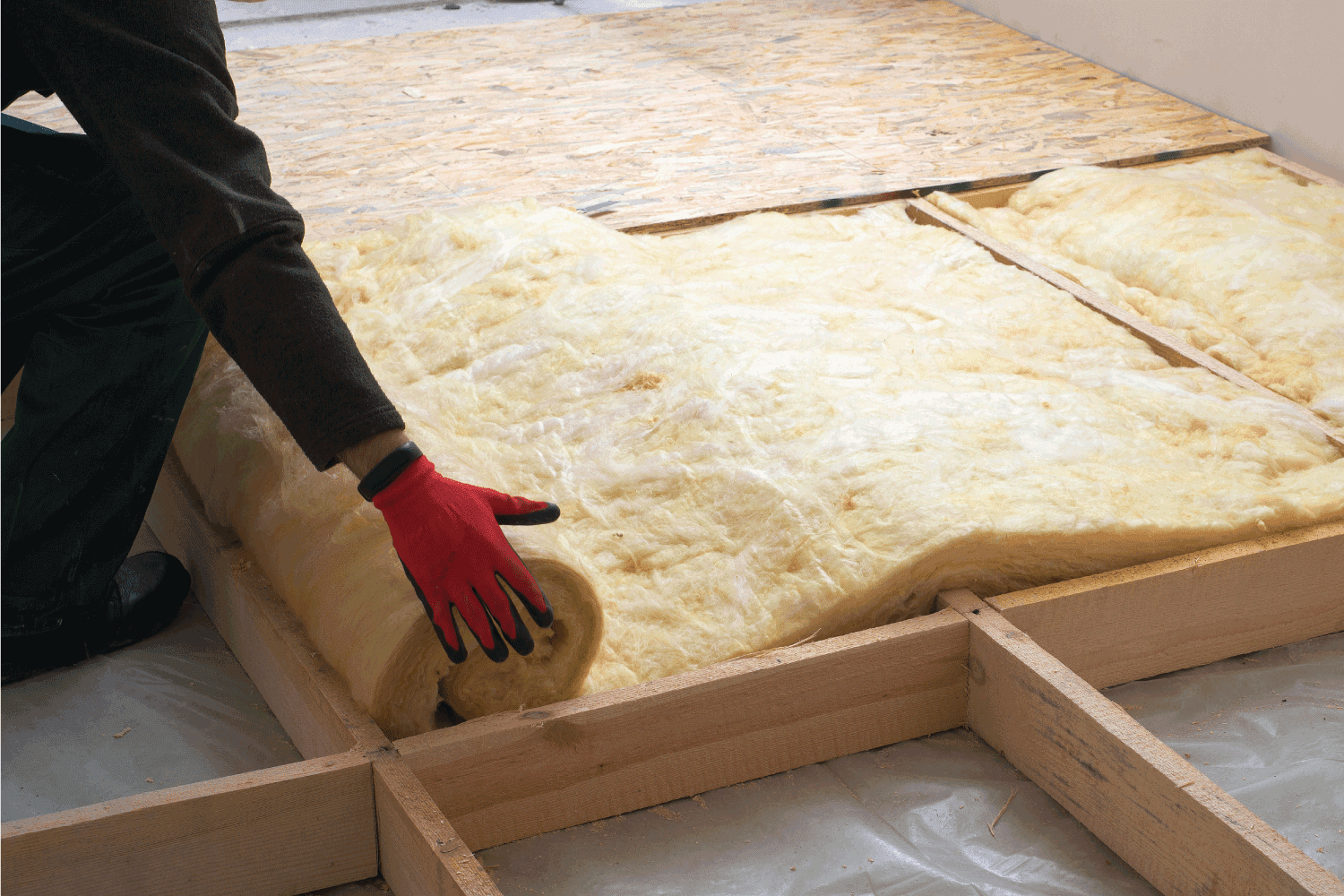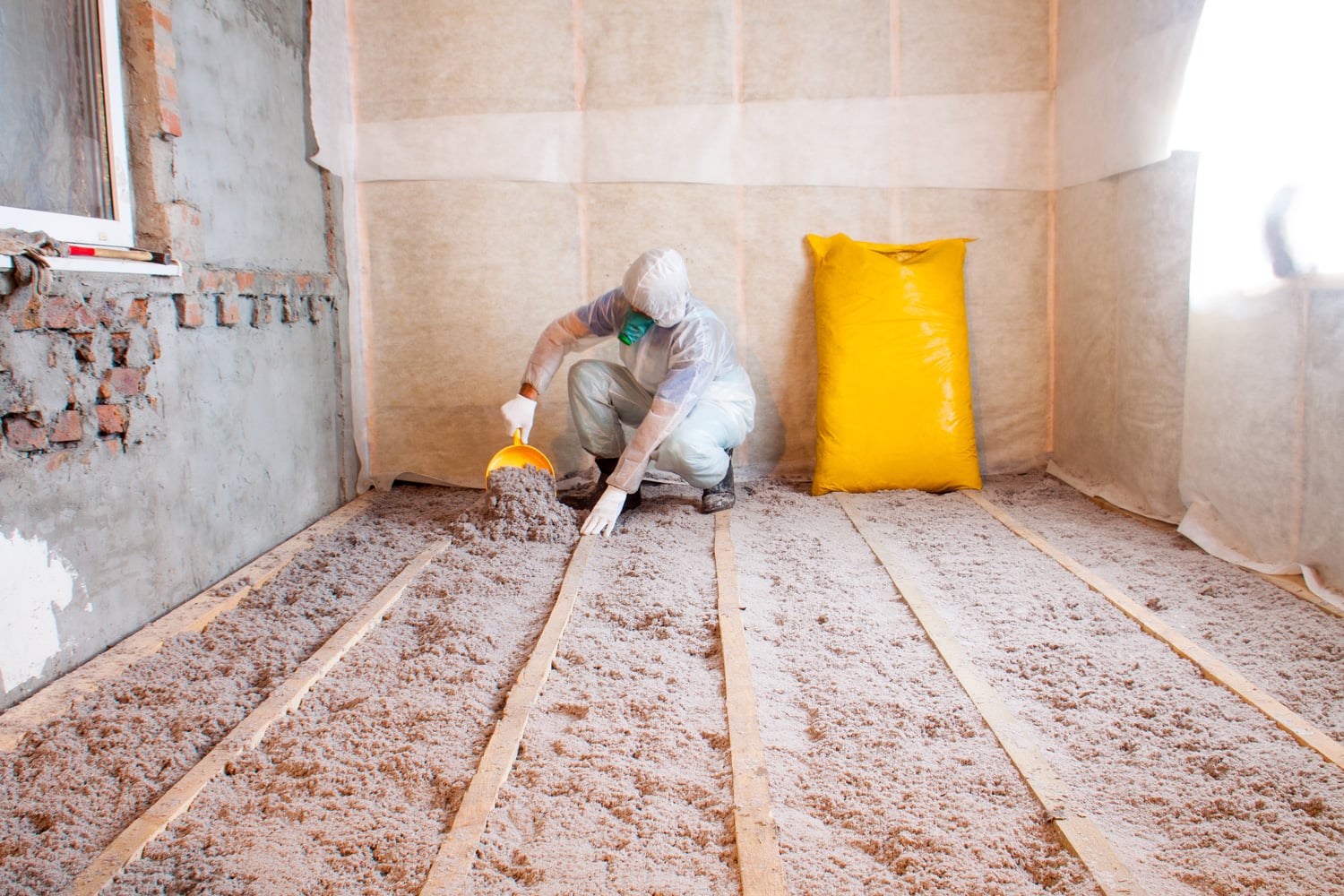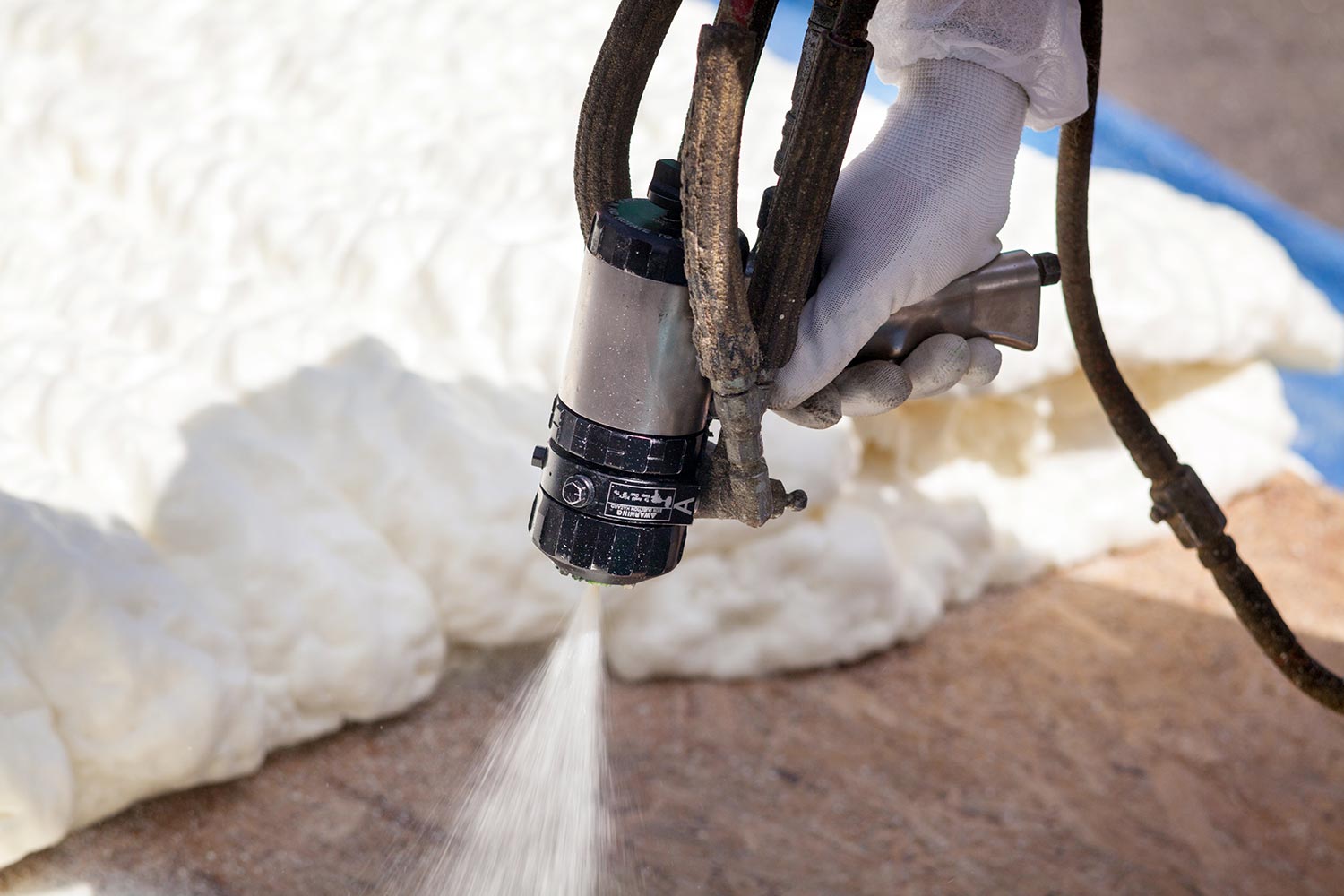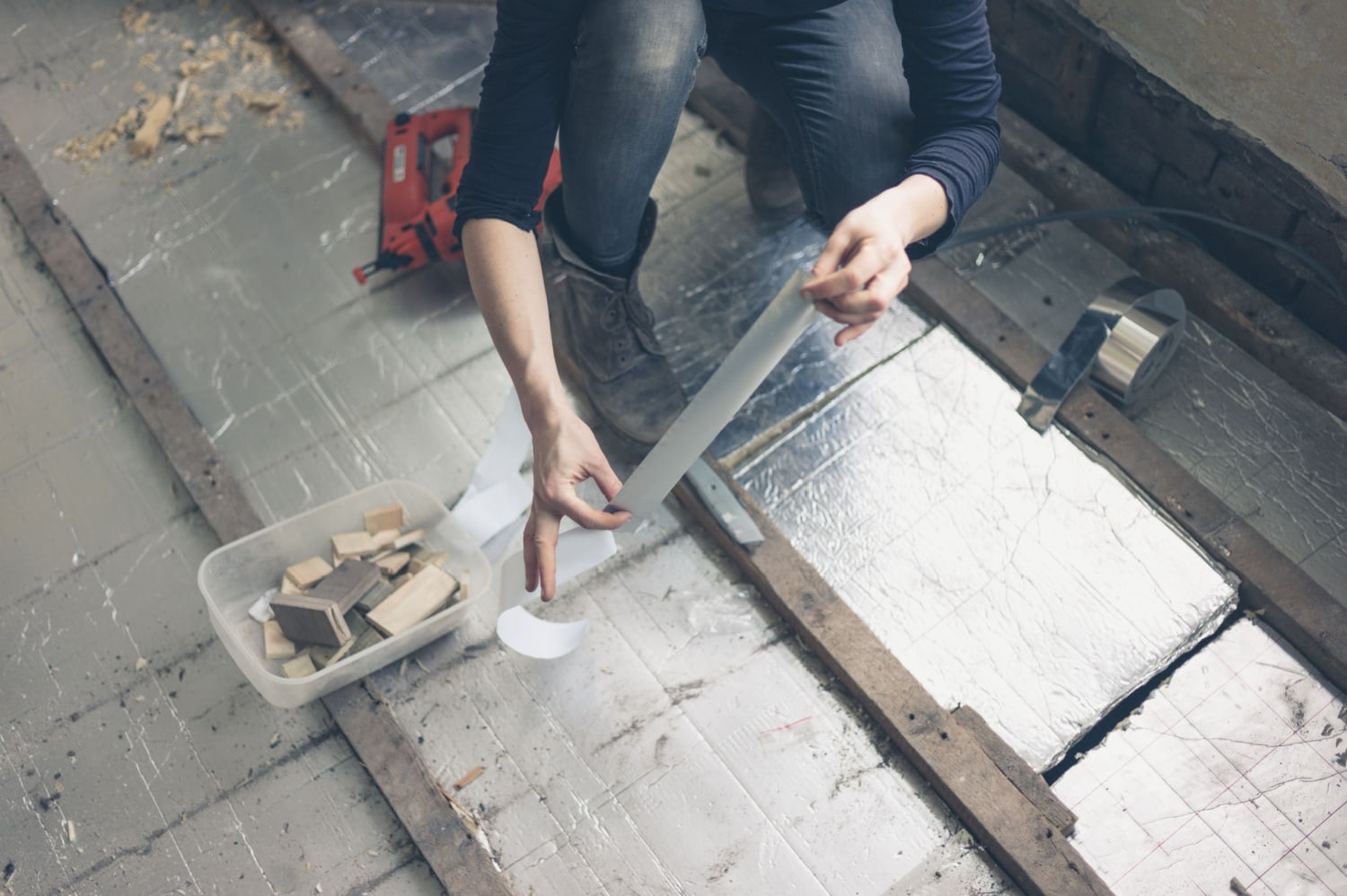Insulating your floors is a crucial step in maintaining a comfortable and energy-efficient home.
Properly installed floor insulation not only keeps your living space warm during colder months but also helps in reducing your energy bills.
However, it's essential to ensure that the insulation remains in place and does not fall down, which could compromise its effectiveness.
You may come across numerous options for floor insulation materials, such as fiberglass, mineral wool, or rigid foam boards. Each material has its unique benefits and installation techniques.

Understanding the right approach for your specific insulation choice will help prevent any future issues like sagging or falling insulation.
Before starting your floor insulation project, take time to research the best practices for installing and securing each insulation material.
Remember that good preparation, correct installation, and periodic inspections are essential to avoid falling insulation and maintain the efficiency of your floor insulation system for years to come.
Understanding Floor Insulation
Floor insulation is essential for maintaining a comfortable temperature in your home and reducing energy costs. By insulating your floors, you can keep the heat in during the winter and cool air during the summer.
When considering floor insulation, you'll come across several materials, such as fiberglass, mineral wool, and spray foam. Each insulation type has its R-value, which indicates its effectiveness at insulating.
Read more about R-values here: Are R Values Additive For Insulation? What You Need To Know!
Proper installation plays a significant role in the effectiveness of floor insulation. Remember to follow the manufacturer's guidelines when installing the material.

You'll often need to secure the insulation material using mechanical fasteners, such as screws, nails, or clips. These elements help hold the insulation in place and prevent it from falling down.
In addition to the mechanical fasteners, it's essential to seal any gaps and joints between the insulation and the floor. This will help to improve the insulation's performance by preventing drafts and heat loss.
Use appropriate sealants, such as caulk or spray foam, to ensure a tight seal between the insulation and the surrounding floor structure.
Finally, remember that safety is always your top priority when working with insulation. Always wear proper safety gear, such as gloves, a dust mask, and goggles.
The gear will protect you from any potential hazards associated with the insulation material, ensuring you can complete the installation process safely and effectively.
Preventing Insulation from Falling Down
When installing floor insulation, it's important to follow the manufacturer's guidelines. Proper installation will not only improve the insulation's performance but also prevent it from falling down.
Ensure you measure the space accurately and cut the insulation to fit snugly between the floor joists. Use the recommended adhesive or fasteners to secure it in place, taking care not to compress the insulation material too much.
Ensure there is a tight seal between the insulation panels and surrounding structures to keep drafts and moisture at bay.
Supporting Mechanisms
To support the insulation and keep it in place, consider using additional supporting mechanisms. You may choose to use wire staves or insulation hangers, which provide added stability.
Get this Western steel and wire 24-inch insulation support on Amazon.
Wire staves can be inserted between parallel joists, holding the insulation in place by tension. Insulation hangers, on the other hand, are attached directly to the joist and hold the insulation with a metal rod.
Be sure to follow the specific installation instructions for the supporting mechanisms you've chosen for optimal results.
Regular Inspections
Regular inspections are crucial to ensure the insulation performs at its best and stays in place. Schedule periodic checks to:
- Look out for any sagging or gaps in the insulation
- Examine the supporting mechanisms for any wear or damage
- Check for signs of moisture, mold, or mildew
If you spot any issues, address them immediately to prevent further damage or energy loss. Maintaining your insulation will go a long way in preventing it from falling down and keeping your home efficient and comfortable.
You might also like: How Thick Is Batt Insulation? [By R-Value]
Benefits of Well-Maintained Floor Insulation
Maintaining proper floor insulation in your home has several key advantages. Let's take a closer look at some of these benefits.

Energy Efficiency
A well-maintained floor insulation system can help you significantly improve your home's energy efficiency. It does so by reducing heat transfer between different areas of the house.
This means that your heating or cooling system will not have to work as hard to maintain a comfortable temperature, ultimately reducing energy consumption and providing a more eco-friendly living environment.
Comfort
One key aspect of having well-maintained floor insulation is the increased comfort that it provides. With proper insulation, your floors will feel warmer in winter and cooler in summer, making your home a more comfortable living space.
Additionally, insulation can help reduce noise transmission between floors so that you can enjoy a quieter and more relaxing atmosphere.
Cost Savings
Lastly, the cost savings of well-maintained floor insulation cannot be ignored. By ensuring your insulation is in good condition and effectively reducing heat transfer, you can expect savings on your energy bills.
In the long run, these savings can be substantial, making it worthwhile to keep an eye on the state of your floor insulation and address any issues as they arise.
Be sure to check out: Do I Need Insulation Between Floors? [Pros and Cons]
Should I consider using spray foam insulation to avoid it falling down in crawl spaces?
Absolutely, considering using spray foam insulation in your crawl spaces is an excellent idea.
Unlike other types of insulation, spray foam adheres to the surfaces it comes into contact with, providing a secure bond and avoiding the chance of falling down over time.

One of the key advantages of spray foam insulation is its ability to expand and fill gaps or irregularities in your crawl space.
This means it can cover all nooks and crannies, leaving no area uninsulated, and keeping your home warmer and more energy-efficient.
When it comes to preventing air leaks, spray foam insulation is an amazing choice. By sealing any gaps, you'll experience fewer drafts, better temperature regulation, and increased energy efficiency throughout your home.
Ease of installation is another benefit of spray foam insulation. You can easily apply it by yourself or with the help of a professional.
The process involves spraying the foam onto surfaces with a specialized tool, which will expand to fill the space, hardening as it cures.
Not only does spray foam insulation help avoid falling down, but it's also a durable and long-lasting solution.
With proper installation, it can last for the lifetime of your home, providing continuous insulation and preventing future maintenance headaches.
Learn more: What Is The R-Value Of Spray Foam Insulation?
Can I use nylon straps and strapping tape to stop sagging insulation?
Yes, you absolutely can use nylon straps and strapping tape to help prevent your floor insulation from sagging or falling down.
Nylon straps are strong, durable, and can provide stability for the insulation, keeping it in place throughout your floor joists.

First, measure the distance between your floor joists, and space nylon straps evenly throughout the length of the joist.
The ideal spacing for nylon straps varies depending on the type of insulation and the size of your joists, but generally, every 12 to 18 inches should be sufficient.
When attaching the nylon straps, make sure to fasten them securely around the insulation and the joists. This ensures the insulation remains in position and prevents it from shifting or sagging. You can use stainless steel screws or nails to fasten the straps to the joists securely.
In addition to nylon straps, using strapping tape can also help hold the insulation in place. Strapping tape is designed to be strong and stick to various surfaces, making it an excellent choice for this purpose.
Check out this heavy-duty reinforced packing tape on Amazon.
Simply wrap the strapping tape around the insulation and the joists, tightening as needed to help keep the insulation from falling down.
Make sure not to compress the insulation too much when using nylon straps or strapping tape, as this can reduce its effectiveness. Keep a consistent and gentle pressure to maintain the insulation's R-value.
Remember that some types of insulation may require additional support or a specific installation technique, so always follow the manufacturer's recommendations and consult a professional if you are unsure.
Securing the insulation is key
To keep your floor insulation from falling down, it's essential to follow some simple yet effective steps. First, ensure you have chosen the right insulation material for your home and climate zone.
Different materials work best for certain climates, and correctly matching the insulation to your situation will significantly improve its performance.
Next, properly install and secure the insulation. Adhesive and mechanical fasteners can be used to ensure the insulation stays in place for the long term.
It's also important to regularly inspect and maintain your insulation. Check for any signs of wear, damage, or sagging, and address these issues as soon as you notice them.
Also, don't forget to consider the ventilation and moisture control of your home. Proper airflow and moisture management can improve the overall performance of your insulation, ensuring a comfortable living environment and energy efficiency.
Finally, don't underestimate the value of a professional installer, as their experience can help prevent common mistakes during the installation process.
By following these steps, you can be confident that your floor insulation remains secure and effective, providing you with a comfortable and energy-efficient home for years to come.


